- Deck: Feminine Myths Oracle
- Author and Artist: Ana Novaes
- Published by: Blue Angel Publishing, 2025
- ISBN: 978-1-922574-29-9
- RRP: AUS $36.95
- Reviewed by: Kim Goldsmith – Cosmic Snail Tarot
Ana Novaes’ new Feminine Myths Oracle Deck published by Blue Angel, explores female deities from around the world. The representations are fresh and contemporary, setting it apart from the many other God and Goddess decks on the market. Each goddess feels human yet otherworldly. Novaes explains in the guidebook that she wanted to capture the personality and relatability of every goddess in the moment before they become myth (p.11). Myths from cultures beyond Greek and Roman mythology are brought to life in this deck. Hindu Lakshmi represents material and spiritual wealth. Mayan Ixchel is linked to the keyword ‘Incubation’ and is associated with the moon and pregnancy. Aja, the woodland spirit of forests and animals from the Yoruba Orisha mythology, tells us to be patient during challenging times. Uretane has both male and female reproductive parts according to South American myth. “Vulnerability” is her keyword because she overcomes embarrassment of her body to ask a woman to marry her. It is the artist’s intention that the cards embody “age-old stories that teach us how to live today” (p.11). By using this deck myths can help us understand our everyday reality.
Ana Novaes is a Brazilian illustrator commissioned to produce book illustrations for Paola Moreno´s book of poetry and Kip Wilson’s novel “The most dazzling girl in Berlin”, as well as a Princess Leia portrait mural for Disney’s new offices in Brazil. Novaes has contributed to tarot and oracle decks, with two others releasing through Blue Angel Publishing this year (2025). Browsing through her portfolios on Behance, Instagram and her website, it is evident Novaes has a consistent style that uses a minimal colour palette. Flat geometric and angular blocks of colour juxtapose soft sketchy portraits of women. Flat planes of black ink or white space are used as backdrops for these figures, rendering them suspended in timeless voids. Constellations, moons and stars are prevalent symbols in her artwork.
There is something naive and wobbly about the way Novaes draws people that distracted me at first. However, the more I used the Feminine Myths Oracle Deck, I started to appreciate that her approach to image making is planned and the execution is skilful. The way she draws figures is expressive and free, and looks like they could be lifted straight from the pages of her sketchbooks. The backgrounds to most cards are patterned or block colour – there is space for us to imagine a context for these Goddesses in our own lives during a reading.
The guidebook is slim and concise. Every Goddess card has a keyword and message from the Goddess in poetic prose. There is also a short practical message for everyday and the Goddess myth and cultural context. The author has added a list of further readings about myths and symbols found in the deck. There is enough information on each page to use these oracle cards in a variety of situations. For example, the myth could prompt ideas for creative writing or drawing exercises, and the message from the Goddess could be used as an affirmation in your journal.
According to the blurb on Blue Angel’s website, each Goddess has a plant or animal symbol on the card. There is no particular reference to this in the guidebook, so I did a bit of my own reading for a few of the more unusual cards. Card 25, Gula (also known as Ninisinna or Ninkarrak) is a Goddess of medicine, healing, creation and destruction worshipped c. 2000-1750 BCE. in Mesopotamia (modern day Iraq). Gula’s companion and symbol is a dog, which represents the power to heal. Novaes depicts Gula wearing a Burqa style covering. In the British Museum there are representations of Gula on a seal wearing a star topped square hat and a long gown which looks like the intricately embroidered clothing worn for traditional festivals in some parts of Iraq. If you are interested, it is worth comparing the ancient representations of the Goddess with Novae’s version. I am curious to know how Novaes approached the research and design of each Goddess card – why she chose certain symbols and clothing, and who the models are that she drew for each one.
Coatlicue is the Aztec Goddess represented on card 4. An impressive stone statue of this Goddess was unearthed in Mexico around the 18th century. It now resides in the National Museum of Anthropology in Mexico City. Comparing the statue with Novae’s oracle card, the former is fang-toothed, snake headed and menacing, while the latter looks defiant yet approachable. The statue wears a skirt of snakes and a necklace of human hearts, skulls and hands. Novaes’ contemporary Goddess wears a human heart on her chest and snakes emerge from behind her. Coatlicue is the mother of the sun and moon gods and represents life and death, creation and destruction. Like the earth, she feeds on decayed things in order to create new life. After reading a little about the myth of this Goddess, I am not entirely sure how the artist decided on the message of ‘self-care’ for this card. Perhaps she is thinking more of this character as a mother figure who nurtures. The myth of Coatlicue reminds me a lot more of the themes of endings, transformation and creativity embodied by the Death card in the Tarot. However, overall I think most of the messages and myths in the guidebook relate well to the images seen on the cards.
Novaes encourages us to use the oracle cards intuitively, and as such there are no spreads in the guidebook. I use this deck to pull a card of the day. Sometimes I use the keywords on the cards to develop an overall theme for a more complex tarot spread. I also incorporate cards from this oracle into spreads alongside the Divine Masculine Healing Oracle deck by Blue Angel Publishing which I also reviewed on the TABI blog. Using both decks together provides contrasting messages between the male and female goddesses represented – almost like a conversation between people of two different opinions. I have enjoyed the artwork so much in this oracle that I want to buy one of her tarot decks to use with it.
One minor disappointment with the deck is that I don’t like the look and feel of the glossy black guidebook pages – matte pages would work better alongside the satin cards and deck box. If you were doing a reading for someone you may need to have the book handy to refer to the message, which could look unprofessional. However, if you love this deck you will probably get to know the card messages quick enough to memorise them. The minimalist colour palette and symbolism may also be hard for some to intuitively read straight away. I prefer to use this oracle for my personal readings, and the guidebook has valuable information to help me interpret the cards.
The Feminine Myths Oracle deck is for everyone, but particularly those who are interested in female characters in myths from around the globe. It is also a great deck for illustrators who want inspiration for making an oracle deck with hand drawn components. The style has a modern edge that differs from other Goddess decks out there. I enjoy working with this oracle the more I use it and I look forward to exploring more of Novaes deck creations in the future.

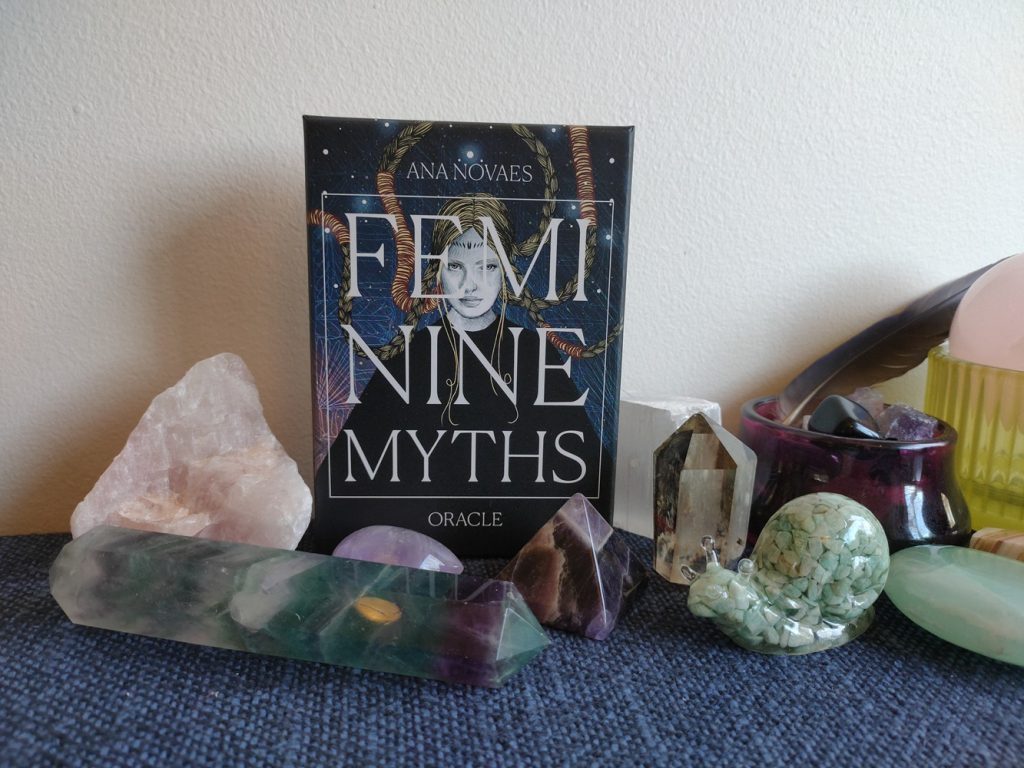
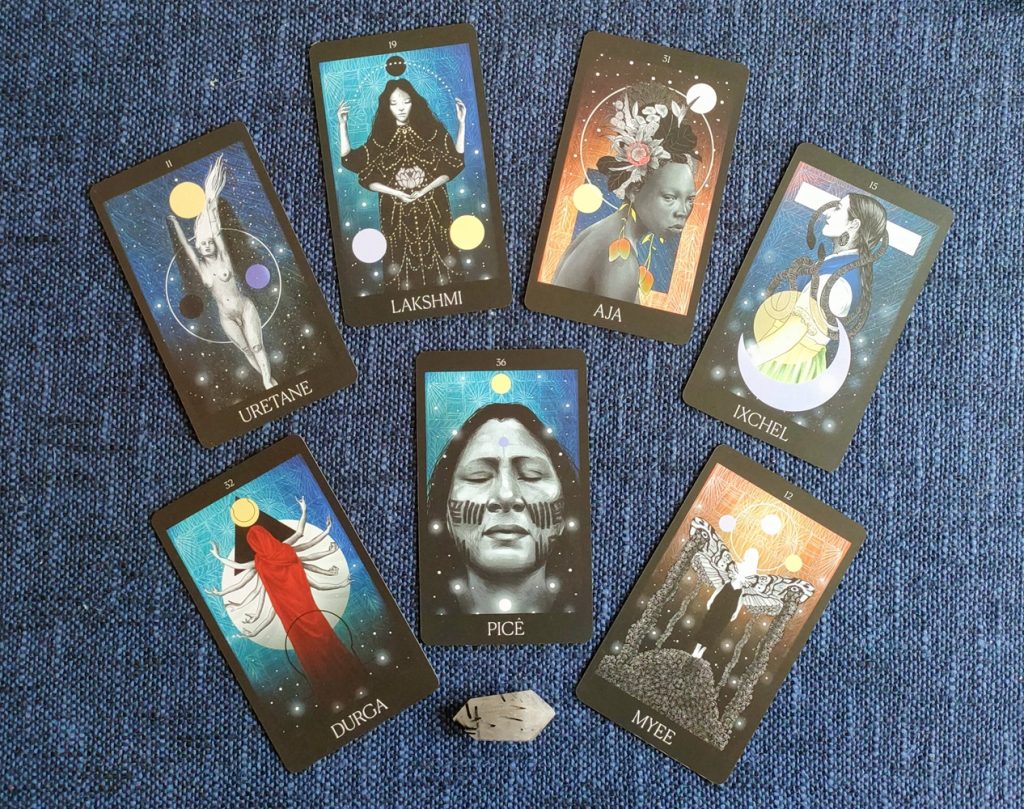
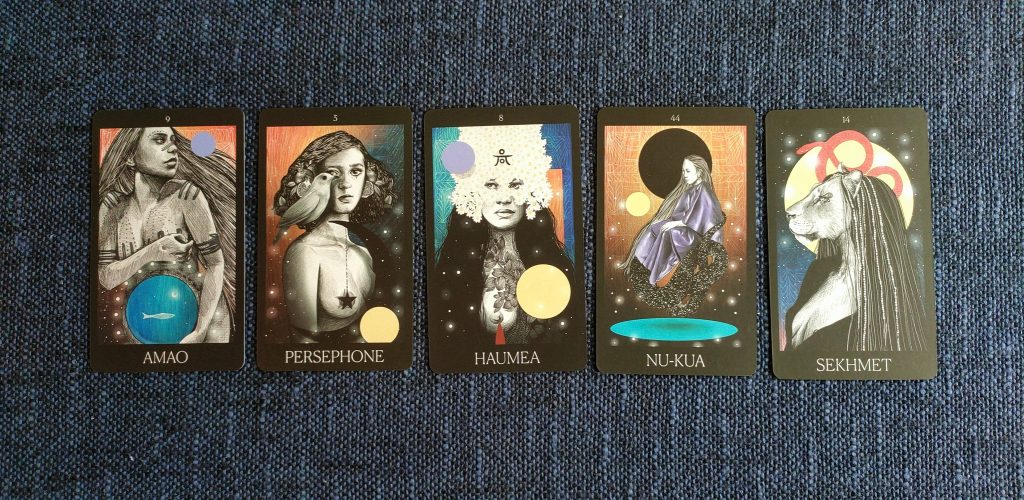
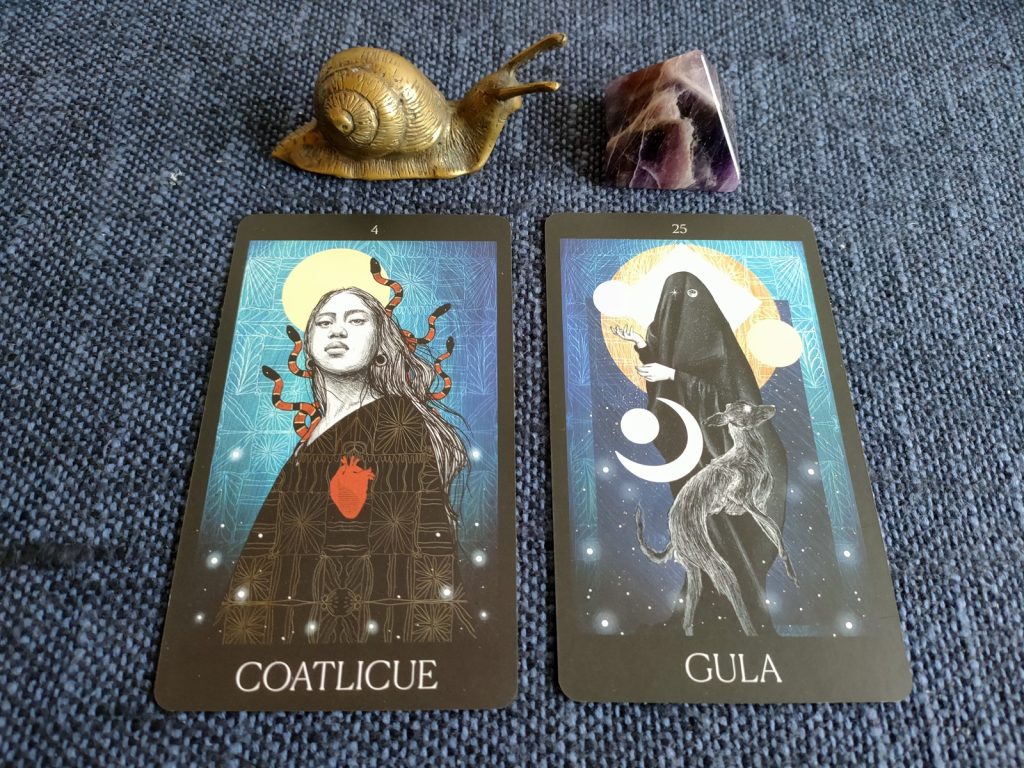
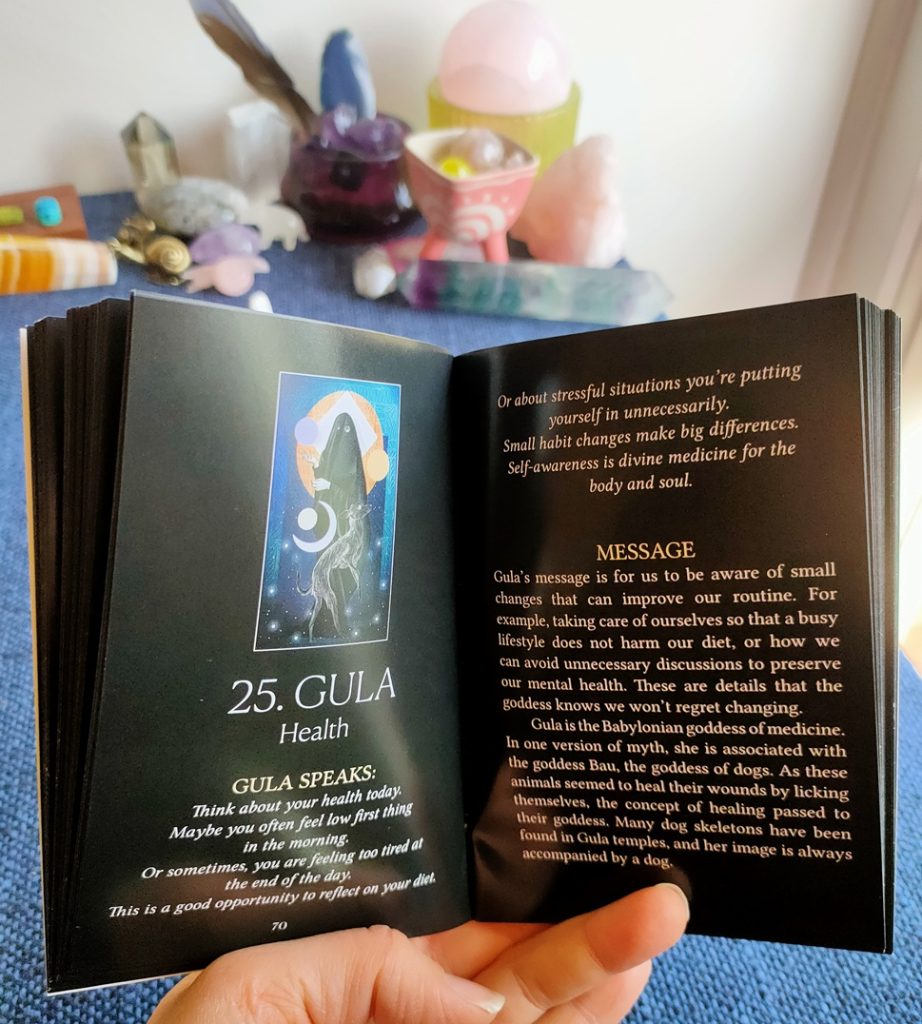
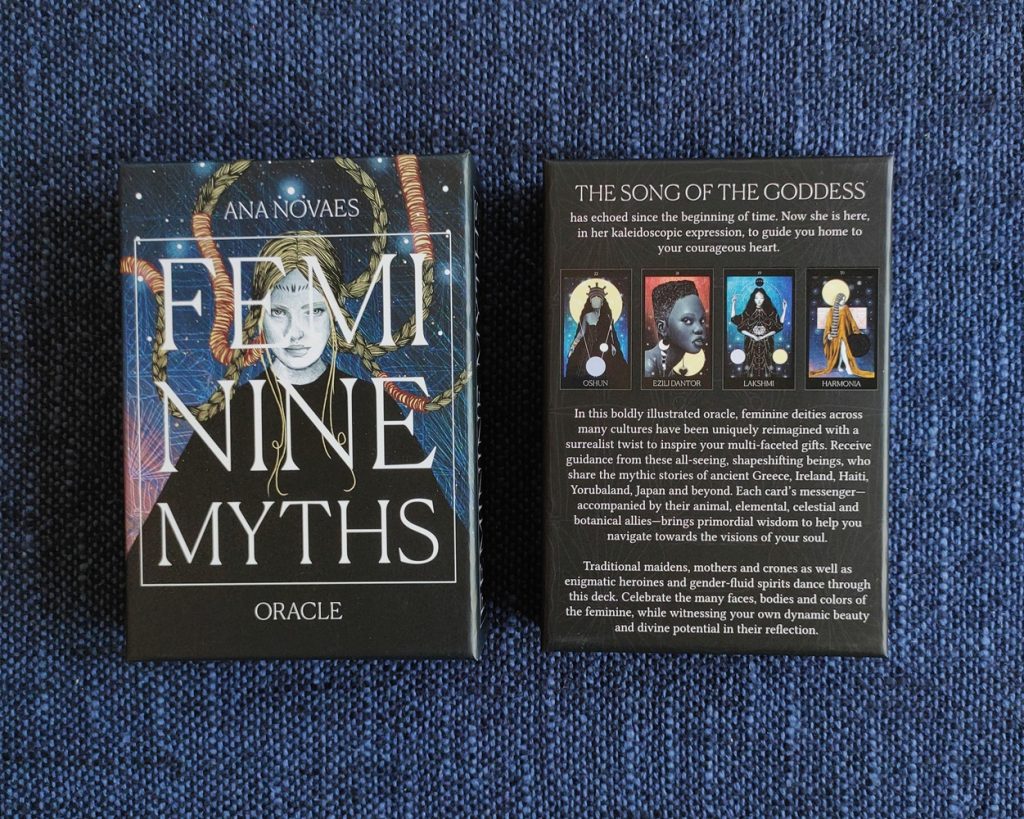
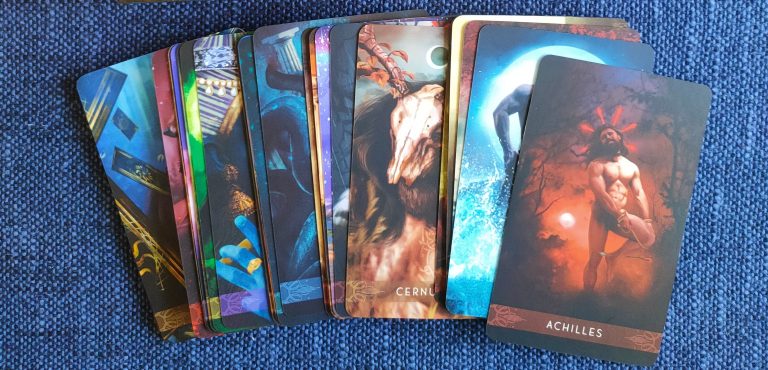



0 Comments